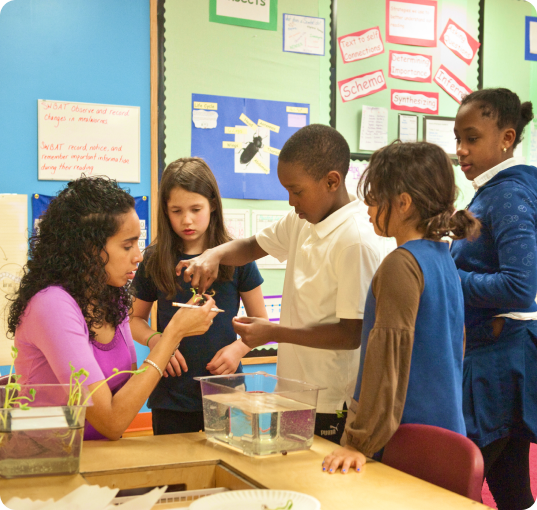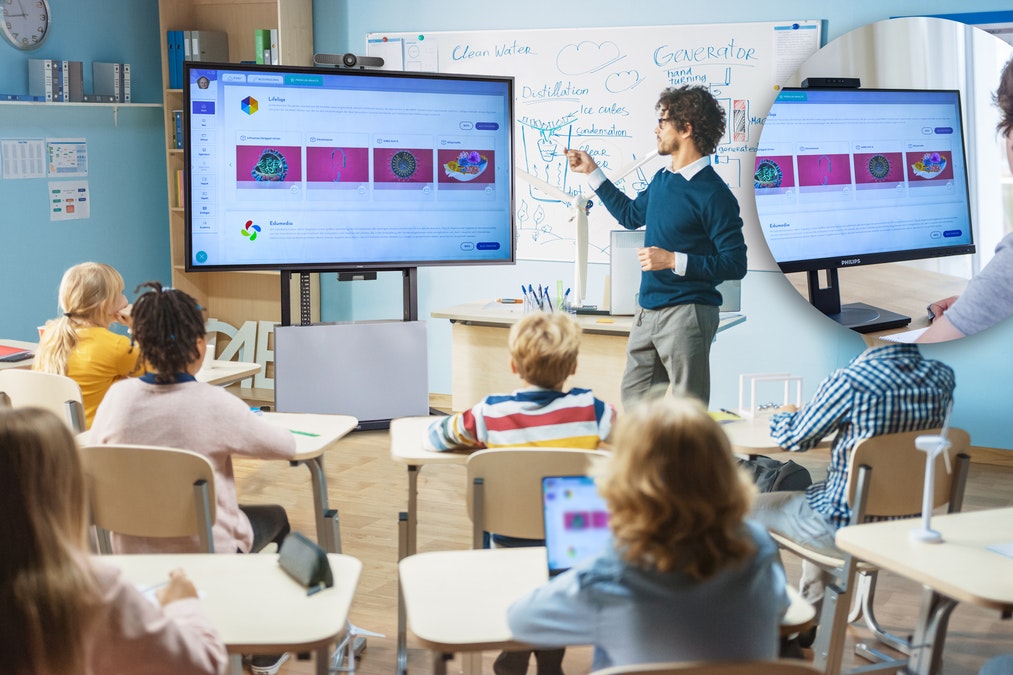Personalized Primary Science Tuition Singapore to Cater to Your Child’s Needs
Personalized Primary Science Tuition Singapore to Cater to Your Child’s Needs
Blog Article
A Comprehensive Overview to the Numerous Discovering Techniques in Primary Scientific Research Guideline
The expedition of varied knowing methods in key scientific research direction provides a possibility for teachers to improve trainee interaction and understanding considerably. By checking out hands-on knowing strategies, inquiry-based strategies, and collaborative methods, we can recognize reliable practices that deal with various discovering styles. Additionally, the integration of modern technology and set apart instruction plays a vital role in cultivating an inclusive environment. However, the question continues to be: exactly how can these methods be properly executed in the class to maximize their impact? The answer hinges on a closer examination of each strategy and its ramifications for training science.

Hands-On Discovering Techniques
Hands-on learning methods play an essential duty in key scientific research direction, engaging pupils in energetic expedition and testing. These techniques allow learners to engage straight with phenomena and products, cultivating a deeper understanding of clinical concepts. By utilizing manipulatives, models, and real-life experiments, instructors create an environment where trainees can observe, hypothesize, and test their concepts.
Such techniques not just improve understanding yet likewise grow crucial thinking and analytic skills. When pupils join tasks like constructing easy machines, planting seeds, or performing chain reactions, they are urged to ask questions and seek responses with their very own observations. This experiential technique assists to debunk complex clinical concepts, making them a lot more relatable and available.
In addition, hands-on discovering promotes partnership among peers, as students frequently operate in teams to carry out experiments or share findings. This teamwork not just enhances their learning experience but likewise establishes crucial social skills. Inevitably, incorporating hands-on methods in main scientific research guideline fosters a lifelong love of discovering and interest concerning the natural world, laying a strong structure for future scholastic pursuits in science and beyond.
Inquiry-Based Understanding
Inquiry-based discovering is an instructional approach that encourages trainees to ask questions, investigate phenomena, and build their own understanding of clinical ideas. This technique moves the focus from conventional teacher-led instruction to a much more student-centered experience, where learners take the effort in their academic trip. By fostering curiosity, inquiry-based discovering advertises deeper involvement with the product, allowing pupils to explore subjects in a significant context.
In technique, this approach commonly involves hands-on experiments, monitorings, and critical thinking tasks that line up carefully with the clinical technique. Students are motivated to develop theories, design examinations, and analyze data, which cultivates essential abilities such as problem-solving and logical thinking. The role of the teacher in this structure is to promote expedition, leading students through the query process while encouraging independent thought and partnership.
Furthermore, inquiry-based understanding supports a feeling of ownership over the learning process, inspiring students to seek expertise proactively. This method not only improves understanding of scientific ideas but likewise promotes a long-lasting love for knowing, gearing up students with the skills essential to navigate an increasingly intricate globe.
Collaborative Understanding Approaches
Joint discovering techniques empower students to take part in significant interactions with peers, fostering a common duty for their instructional outcomes. In primary science instruction, these methods encourage students to collaborate to explore clinical ideas, solve problems, and conduct experiments (primary science tuition Singapore). By participating in group tasks, students can leverage diverse point of views, enabling richer understanding and retention of scientific knowledge
One key aspect of collective learning is the focus on interaction skills. Pupils need to express their ideas, listen proactively to others, and work out concepts, every one of which are important proficiencies in both scholastic and real-world contexts. This social interaction not only boosts their understanding of clinical principles but also promotes team effort and problem resolution abilities.
When students see the worth of their contributions within a team, they are much more most likely to take possession of their discovering trip. On the whole, including joint discovering methods in main scientific research instruction grows a dynamic knowing environment that prepares students for future scholastic and social obstacles.
Innovation Integration in Science
The assimilation of innovation in primary science instruction boosts learning experiences by offering cutting-edge tools and sources that support different mentor methodologies, consisting of collective discovering - primary science tuition Singapore. The use of electronic systems, simulations, and interactive applications allows site here trainees to involve deeply with scientific principles, assisting in a much more hands-on method to learning
Online laboratories, for circumstances, enable students to carry out experiments securely and effectively, advertising inquiry-based discovering. These devices can imitate real-world scientific situations, allowing trainees to envision complex procedures that would be difficult to reproduce in a traditional class setting. Modern technology cultivates interaction and cooperation among students, as they can share findings and work together on jobs with online systems.
In addition, multimedia presentations and academic videos can improve lessons by catering to diverse learning styles, making abstract ideas much more available. Information analysis devices also equip pupils to collect and interpret scientific data, strengthening vital thinking abilities. In general, the strategic incorporation of technology in primary scientific research instruction not just improves involvement however also prepares trainees for a highly sophisticated society, equipping them with vital abilities for future scientific ventures.
Set Apart Instruction Techniques
Separated direction approaches are necessary for dealing with the varied needs of learners in main scientific research education and learning. These strategies make it possible for instructors to customize their teaching methods to accommodate differing abilities, interests, and discovering styles within the classroom. By using separated direction, instructors can create an inclusive atmosphere that promotes interaction and enhances understanding of scientific ideas.
One effective technique is to utilize flexible grouping, which permits pupils to team up with peers at similar ability degrees or with differing viewpoints. This strategy encourages peer understanding and promotes important thinking. Furthermore, using selections in projects can equip students, allowing them to select jobs that resonate with their rate of interests while still meeting curricular objectives.
Additionally, integrating tiered jobs is an additional important method. By creating tasks with varying levels of complexity, instructors can make certain that all students are properly tested, no matter their efficiency. Using formative assessments to determine understanding more enables teachers to change their instructional techniques dynamically, guaranteeing that each student gets the support they need.
Eventually, executing distinguished instruction techniques in key scientific research education and learning not just boosts pupil discovering end results yet also cultivates an interest for science, preparing trainees for future academic searches.

Conclusion
In recap, reliable key science direction great post to read demands a multifaceted technique that incorporates hands-on discovering, inquiry-based techniques, and collaborative strategies. The assimilation of modern technology and separated guideline further caters to varied knowing designs, fostering an atmosphere helpful to expedition and vital thinking. By implementing these strategies, teachers can boost pupil interaction and comprehension, inevitably nurturing a long-lasting passion for scientific research and query. Such detailed approaches are necessary for creating educated and interested future researchers.
The exploration of varied discovering approaches in main science direction presents a chance for educators to boost pupil involvement and comprehension substantially.Hands-on learning techniques play an essential this post function in main scientific research instruction, involving students in active exploration and experimentation.Inquiry-based discovering is an instructional method that encourages students to ask questions, investigate phenomena, and create their very own understanding of scientific principles.Collective learning strategies equip pupils to engage in meaningful communications with peers, cultivating a common obligation for their instructional results. Generally, integrating joint learning methods in main scientific research instruction grows a vibrant understanding environment that prepares pupils for future scholastic and social obstacles.
Report this page